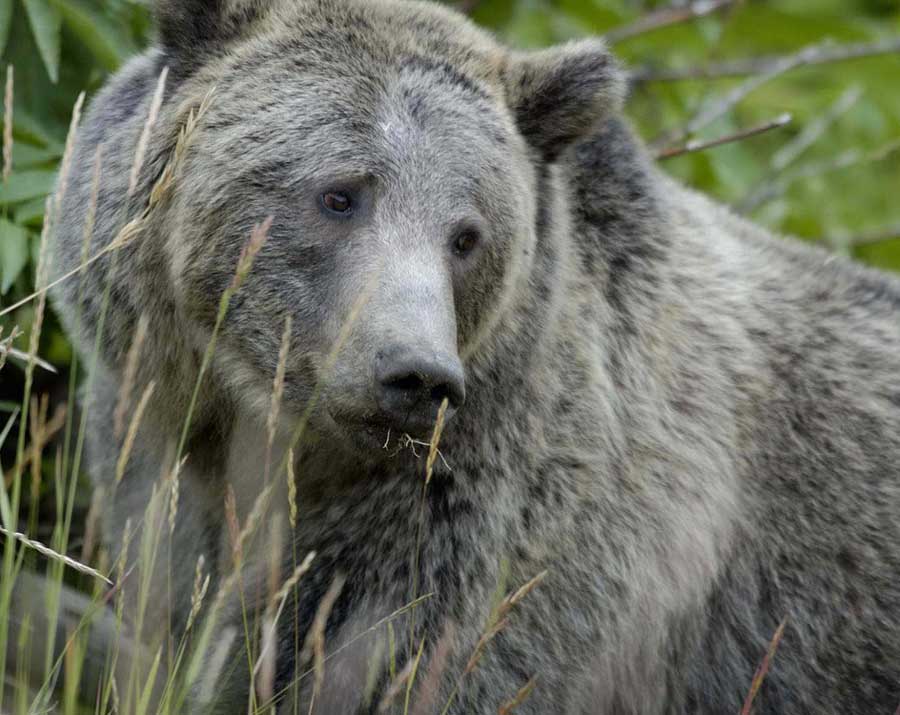
By Ruffin Prevost
Citing a Wyoming law that protects landowners who allow outdoor recreation on their land, a federal judge has ruled against a woman who filed a wrongful death suit that blamed federal researchers after her husband was killed by a grizzly bear that had been tranquilized and released near the East Gate of Yellowstone National Park.
U.S. District Court Judge Nancy Freudenthal in Cheyenne issued a summary judgment in the civil case on Tuesday. Freudenthal dismissed the case “based upon Wyoming’s Recreational Use Act,” a state law that releases landowners from liability or obligations to warn non-paying recreation users in relation to potentially dangerous activities.
Erwin Evert, owner of a summer cabin in the Shoshone National Forest, had hiked along a trail near Kitty Creek on the afternoon of June 17, 2010. The 70-year-old botanist was mauled to death by an adult male grizzly bear that had just hours before been snared, tranquilized, collared and released by researchers with the Interagency Grizzly Bear Study Team.
Yolanda Evert sued the federal government, arguing that her husband died after hiking into an area where warning signs had been prematurely removed by study team members supervised by the U.S. Geological Survey.
Federal attorneys said researchers pulled the warning signs on the last day of their work after figuring that no one would be hiking in the remote area off the main trail during high winds and bad weather.
The case hinged on whether it should have been “obvious” to researchers that someone would have been hiking in the area, and whether they had a duty to warn hikers based on Wyoming’s Recreational Use Act.
Evert’s attorneys had argued that the study team had “willfully and negligently created a dangerous hazard by baiting, trapping and releasing” a grizzly bear less than a mile from cabins and near a trail, and that researchers failed to properly notify and warn cabin owners and the public.
Since the mauling, differing accounts emerged about how much Evert may have known about trapping efforts around the site where he was killed.
At least one of Evert’s friends said the botanist knew about dangerous bears and trapping efforts in the area, but his wife and daughter have said Evert didn’t know about trapping at the specific site where he was attacked.
Court documents and other sources confirm that Evert knew there was trapping in the general area.
Freudenthal cited the extended presence of additional warning signs along the main access trail leading to the incident cite in determining that “it was not obvious to the government that a hiker would intentionally follow their tracks” to the site where the bear was released.
Wildlife officials, uncertain whether the bear’s aggression toward Evert was natural or aberrant, tried without success to recapture it, and shot it dead from a helicopter two days after the mauling.
Researchers studying grizzly bears previously did not publicize their trapping operations. But officials changed that policy after Evert’s death, and send advance notices to regional media outlets.
The Interagency Grizzly Bear Study Team was established in 1973 to collaboratively monitor and manage bears across state and jurisdictional boundaries. The group’s work to gather data on protected bears is part of a long-term research effort required under the Endangered Species Act to help wildlife managers guide agency efforts to assist in the recovery of regional grizzly bear populations.
Contact Ruffin Prevost at 307-213-9818 or [email protected].

I am so sorry for the loss of Mr. Evert……but i do believe that each & everytime we set foot on open lands where wildlife roams, we are taking a huge risk. Being able to study & observe wildlife is so crucial to not only their survival, but ours too.